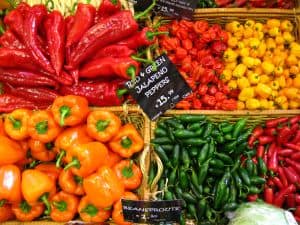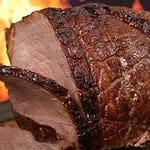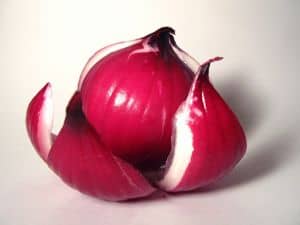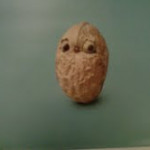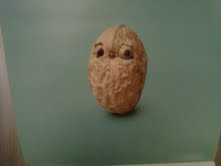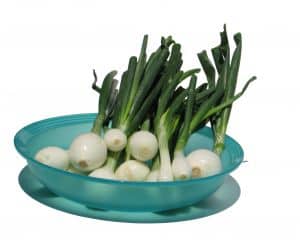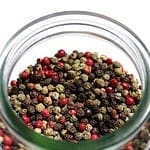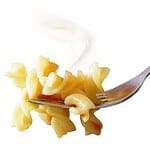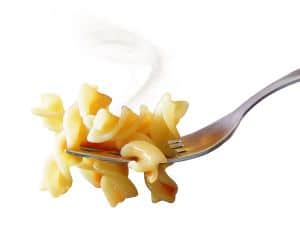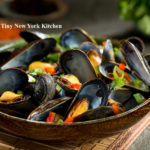Semifreddo
Semifreddo also called Semifrio, what does it mean? We hear the dessert term Semifreddo, but just what does it mean? Semifreddo (or Semifrio) is somewhat of a broad term. Essentially, it refers to a chilled or partly frozen dessert of gelato, spumoni, mousse or Neapolitan ice cream layered with whipped cream or meringue and sometimes sponge cake. The word is Italian and means “half frozen/half cold.”
Roasts
We all know to let steaks rest after cooking, but it’s even more important for larger pieces of meat. The juices need time to settle and resting lets the internal temperature of meat continue to rise. The larger the cut the more it rises which is why it should get pulled out of the oven before it reaches the desired temperature. If you want your beef tenderloin medium-rare (125° F) then take it out of the oven once the internal temperature (use a meat thermometer) hits 120° F. Don’t worry about the meat getting cold. An eight pound or larger roast will stay warm for up to 1 hour tented with foil.
For fast and even cooking a roast needs to sit at room temperature before it goes into the oven. Taking it out of the refrigerator well ahead of cooking allows the temperature of the interior to come closer to that of the exterior which will cook into beautiful pink meat throughout the finished roast. Allot at least 2 hours for a small roast to warm up and no more than 2 hours for a larger one. Any longer than 4 hours is a bit iffy in, the safe department. Only when the roast is at room temperature is it ready to go into a hot oven.
Peanuts
In the fall of 2011, American peanut farmers experienced one of the worst peanut harvests in decades increasing peanut butter prices across the country. China leads in production of peanuts, having a share of about 41.5% of the overall world production, followed by India (18.2%) and the United States (6.8%).
The Top Ten Producers of Peanuts in 2008/2009
1. People’s Republic of China 14.30 Million Metric Tons
2. India 6.25 Million Metric Tons
3. United States 2.34 Million Metric Tons
4. Nigeria 1.55 Million Metric Tons
5. Indonesia 1.25 Million Metric Tons
6. Myanmar 1.00 Million Metric Tons
7. Sudan .85 Million Metric Tons
8. Senegal .71 Million Metric Tons
9. Argentina .58 Million Metric Tons
10. Vietnam .50 Million Metric Tons
Pepper
Called the “spice of life,” it was once only available to the rich. Now it is hard to imagine cooking without it. New peppers have become available for our use. White pepper is dried, pink and green come packed in water or vinegar. Invest in a good peppermill, as ground black pepper loses its vitality soon after it is ground.
Cooking Pasta
Delicious, healthy, and easy to prepare, pasta is the perfect food for the way we eat today. There have never been more enticing noodles to choose from. So whether you’re cooking fresh fettuccine, dried penne, or Asian pasta, here’s how to get great results every time.
Fresh, tender pasta is a delight to eat, but fresh pasta isn’t superior to dried. It is simply different. Fresh noodles, which are typical of the cooking of northern Italy, are finer textured and richer because they are made with eggs and pair best with delicate sauces. By contrast, dried pasta, favored by southern Italian cooks, which is made from flour and water, is more economical, lower in fat, and the best choice for robust, highly flavored sauces.
For the best taste and texture, buy dried pasta made from durum wheat or semolina flour. Semolina is more coarsely ground durum wheat. Good quality pasta will have a clear yellow color and feel hard and smooth. Stored in a cool, dry, dark place, dried pasta will keep up to 1 year. Whole wheat pasta will keep up to 6 months. Store commercially makes fresh pasta in the refrigerator according to package directions, which should be up to 1 week, or freeze up to 1 month. Storing pasta in a clear glass or plastic container on an open shelf or counter exposes it to light, which destroys riboflavin, a B vitamin and key nutrient in pasta. Instead, store pasta in an opaque container or in the cupboard. Buy pasta sold in cardboard cartons, which keep out the light.
The secrets of cooking the perfect pasta are easy. Start with plenty of water. Use at least 4 quarts of water for every pound of pasta. Add the pasta and salt after the water comes to a rapid boil. If the water stops boiling when you add the pasta, cover the pot just until the boil returns. Stir frequently. This ensures even cooking and prevents strands from clumping or sticking to the bottom of the pot. Check early and often for doneness. Cooking times on packages are guides not rules. Start checking for doneness early. You don’t want to overcook your pasta. Test the texture. Perfectly cooked pasta should feel firm to the bite. This texture is described in Italian as al dente, or “to the tooth.” At this stage, the pasta will have no raw flour taste, but will reveal a tiny chalky white center. Residual heat will continue to cook the pasta as it’s drained and tossed, so gauge cooking time accordingly. Avoid a soggy sauce! Drain cooked pasta thoroughly by shaking excess moisture through the colander. NEVER rinse pasta! I like to drizzle a small amount of olive oil on the pasta after shaking the excess moisture through the colander. Serve pasta hot. Remember that pasta will wait for no one! The noodles tend to absorb liquid and the pasta will cool down quickly. For best results call everyone to the table while you are tossing and serve the pasta in prewarmed bowls.
Confused about salting the water? Almost all pasta recipes suggest adding salt to the pasta’s cooking water. Purists wouldn’t have it any other way. Some people shy away from this step because they’re worried about sodium, but in truth, the salt added to the water isn’t all absorbed by the noodles. It merely seasons the noodles and raises the cooking temperature 2 degrees. I recommend 2 teaspoons per pound of pasta. When you drain the noodles, you’re draining much of the sodium as well. Only about 10 percent is absorbed by the pasta. Salting the water results in pasta noodles with a much fuller flavor.
When cooking long pasta, like spaghetti or linguine, add the pasta to boiling water. Push the ends down as they soften until all of the strands are immersed. Cover the pot until the water returns to a boil. To prevent the noodles from sticking to the bottom of the pot, stir often. A spaghetti for grips and separates the strands, allowing for easier draining and neater serving.
Whatever pasta dish you are making for your family tonight you will have better results by following these tips. Manga!


